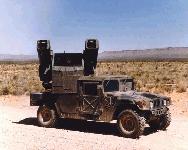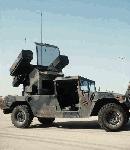


| Specifications | |
| Name | Avenger |
| Crew | 2 |
| Combat Weight | 8,300 lbs |
| Hull length | 16ft 3 in |
| Width | 7 ft 2 in |
| Height | 8ft 8in |
| Ground Clearance | 16 in |
| Track Width | no tracks |
| Main Armament | 8 Stinger missiles 10 km acquisition range |
| Secondary Armament | 1 12.7mm M3P machine gun with 200 12.7mm rounds |
| Sensors and Fire Control | Digital fire control, FLIR, CO2 laser rangefinder, driven-reticle optical sight, remot control unit operable from Humvee cab or away from vehicle |
| Armor | supplemental armor on cab |
| Powerplant | Detroit Diesel 135 hp coooled V-8 |
| Suspension | independent double A-arm with coil spring on all wheels |
| Speed | 60 mph range 300 miles |
| Obstacle Clearence | 1ft 10in , gradient 60% fording with preparation 5 ft, with out 2ft 6 in |
| PRIME CONTRACTOR | Boeing Aerospace (Huntsville, AL; Oakridge, TN) |
| SUBCONTRACTORS |
|



| 歡迎光臨 鐵之狂傲 (https://www.gamez.com.tw/) |